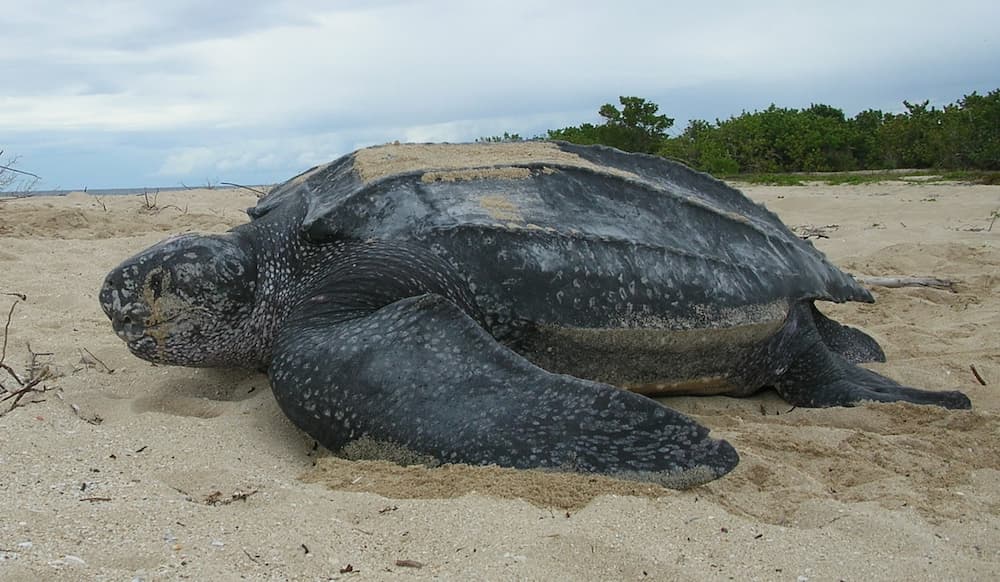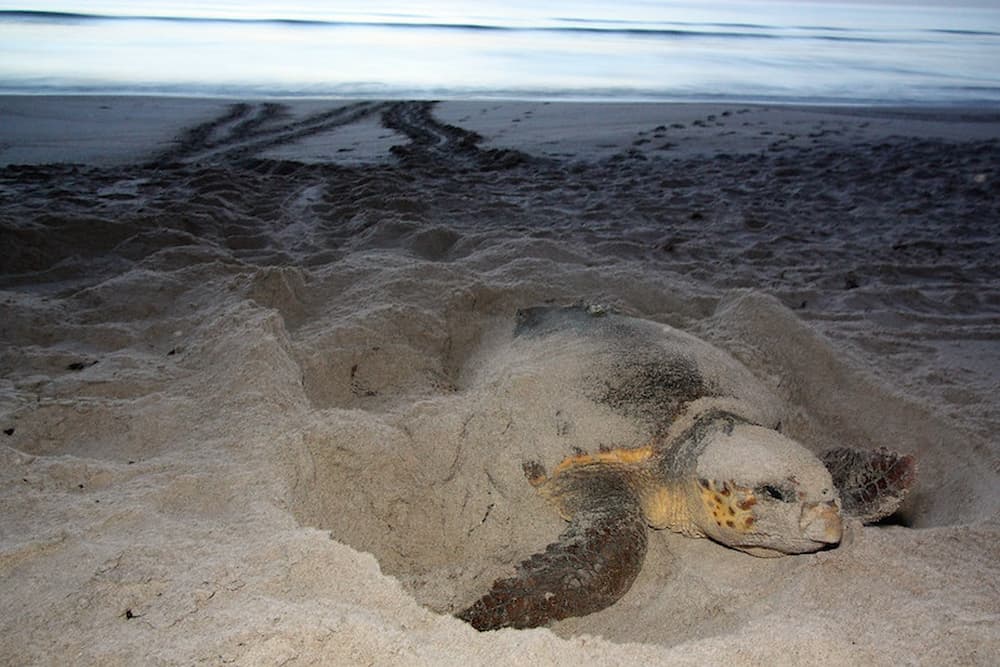Sea turtle nesting season in Broward County is from March 1 - October 31 annually.
Florida's Sea Turtles
Five species of sea turtles call Florida's waters home: leatherback (Dermochelys coriacea), loggerhead (Caretta caretta), green turtle (Chelonia mydas), hawksbill (Eretmochelys imbricata), and Kemp’s ridley (Lepidochelys kempii). Three species of sea turtles nest annually on Broward County’s beaches: the leatherback, loggerhead, and green turtle. Nesting season for Florida’s east coast, including Broward County, lasts from March 1 – October 31 each year. During this time, female turtles emerge from the sea to lay their eggs in the sand and about two months later, hatchlings crawl from their nests and back into the ocean, all under the cover of darkness. Continue reading below to find out more about the three species of sea turtles that nest on Florida's beaches.
Leatherback Sea Turtles
Leatherbacks are the largest living species of sea turtle in the world. They are pelagic (open-ocean) dwellers and federally listed as endangered. Leatherbacks can grow to be almost six feet in length and weigh over 2,000 pounds when fully grown. Their unique, almost rubbery shell is black with ridges running from head to tail; the flexibility of the leatherback shell allows it to dive deeper than any other turtle species. A flexible shell is important to withstand pressure and avoid cracking at great depths. Leatherbacks dive deep to search for their primary food source: jellyfish. Leatherbacks primarily nest on Florida’s beaches from March-June.
 Photo credit: U.S. Fish and Wildlife Service
Photo credit: U.S. Fish and Wildlife Service
Loggerhead Sea Turtles
Loggerheads are Florida’s most common sea turtle and historically account for over 90% of all sea turtle nests in Broward County. Florida’s beaches support one of the most important nesting areas in the world for loggerhead sea turtles (Ceriani and Meylan, 2015). When fully grown, loggerheads are about 3 feet in length and weigh about 300 pounds. They are characterized by a brown or rusty-colored shell and a large head. The large head is full of muscle that powers their strong jaw muscles which crush food such as conch, lobster, and crabs. Loggerheads nest on Florida’s beaches from April-July and are listed as threatened under the Federal Endangered Species Act.  Photo credit: Florida Fish and Wildlife Conservation Commission
Photo credit: Florida Fish and Wildlife Conservation Commission
Green Sea Turtles
Green turtles also nest on Florida’s beaches in the summer. They are about 4 feet in length and 400 pounds when fully grown. Green turtles have an olive-colored shell, and a smaller head compared to their body size. Their name comes not from their coloring on the outside, but on the inside; their body fat is colored green! Green turtles exhibit a diet shift from omnivorous (eating both plants and small animals) as hatchlings and juveniles to herbivorous (eating only plants) as adults. They will feed on seagrass and algae, which is thought to make their body fat somewhat green in color. These turtles have been recently down-listed to threatened in Florida, and nest in Broward County from June-September.
 Photo credit: Florida Fish and Wildlife Conservation Commission
Photo credit: Florida Fish and Wildlife Conservation Commission
